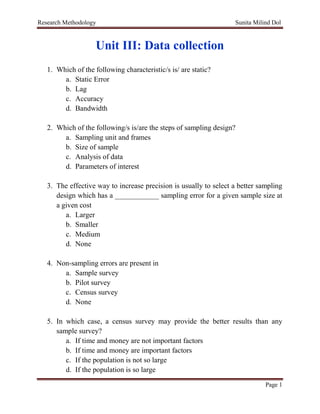The document outlines various research methodology concepts including data collection, sampling designs, and hypothesis testing. It addresses types of sampling, personal interview methods, and measurement of central tendency and dispersion. Additionally, it covers correlation, regression analysis, and the significance of sample design and observer methods in research.



















